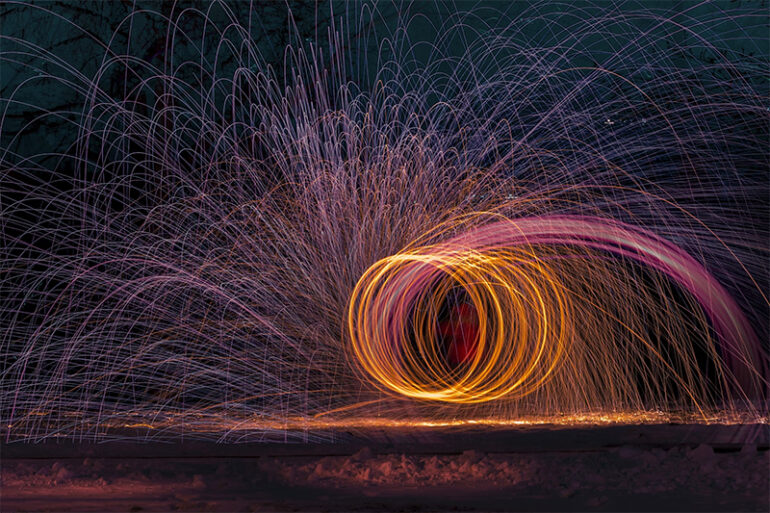A fascinating artistic form that traces its roots back to the early 20th century, light painting has mesmerized scores of photographers and artists because of the way this art form combines light and creative imagination. The light painting was the captured light trails on photographic film, while the light painting of today is an elaborate technique and tool used to grow as an art medium that goes beyond traditional demarcations of photography and painting. With a delicate balance of light intensity, exposure time, and artistic vision, practitioners of light painting push the envelope on what can be told with a visual story and invite the audience into a world that seems to marry imagination with reality.
The History of Light Painting
Light painting is a kind of very attractive way of artistic expression. This tendency can be tracked back to the very beginning of the 20th century, when artists were experimenting with capturing trails of light on photographic film. This new technique has helped evolve over time and has boomed in the modern photography arena, with photographers who really want to test new limits of creativity. Light painting artists have, in effect, taken rather common views from zero to hero using a cocktail of long-exposure settings and light sources, effectively bridging the gap between photography and painting.
Techniques and Tools for Light Painting
Light painting enthusiasts use techniques and tools, ranging from simple handheld sources of light like flashlights and glow sticks to programmable and even attachable LED wands, likely limited only by their imagination, to craft their glowing masterpieces. Allowing the practitioner control over the exposure settings and movement patterns results in intricate patterns, ethereal shapes, and vibrant textures that dance across the canvas of darkness to yield visually arresting and unique plots, gripping the audience.
Light Painting in Photography
Light painting in photography therefore becomes an active tool through which photographers are able to add some magic and surrealist elements into their photography. Photography through the light painting technique is able to turn a very normal scene into an extraordinary, emotional one, and arouse the imagination of the masses. Whether capturing the graceful arcs of light trails or painting intricate designs in mid-air, the marriage of light with photography opens limitless, creative views that bid the viewer to explore the borders of perception and reality.
Tips for Creating Stunning Light Paintings
There are several tricks behind making an exciting light painting that an aspiring artist can learn. First, it is of prime importance to continue working on the balance between the intensity of light and the time of exposure to have the desired effects. Experimentation on varied light sources and movements can lead to unique results. In addition, this goes well with planning the compositions and patience in practice that have been elaborated. Long is the journey toward creating intricate and visually appealing light paintings. With skills well refined and embraced, it gives an artist the ability to unlock their potential in the use of light painting for artistic expression.
Ultimately, light painting is an art form that transcends time and its appeal, forever captivating artists and viewers. With its roots reaching back to the early 20th century, this innovative technique, bringing along a rich historical value, has now twisted into a captivating crossover between photography and painting, trying to transgress the boundaries of creativeness. Light painting, a medium for artistic expression, reaches its full potential by aspiring artists who have mastered the interplay of light sources, exposure settings, and movement patterns to craft arresting visual narratives.
Photo Attribution:
1st & featured image by https://unsplash.com/photos/pink-and-orange-light-string-photography-sBvK15KlpYk
2nd image by https://unsplash.com/photos/photo-black-dslr-camera-on-tripod-TQWvE-pqoeU

